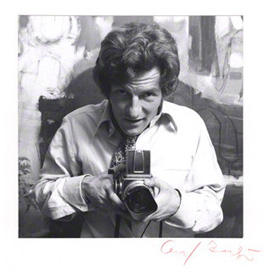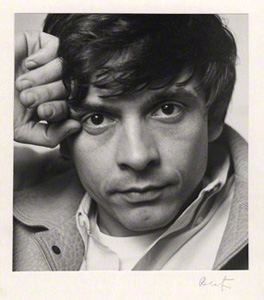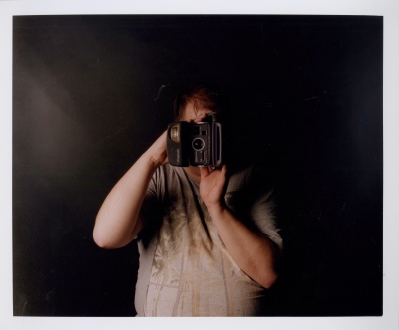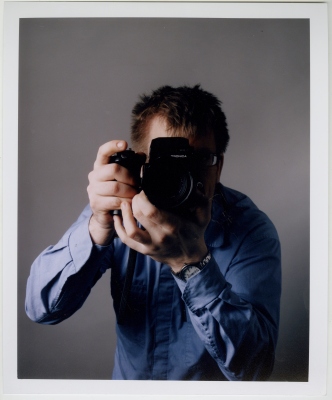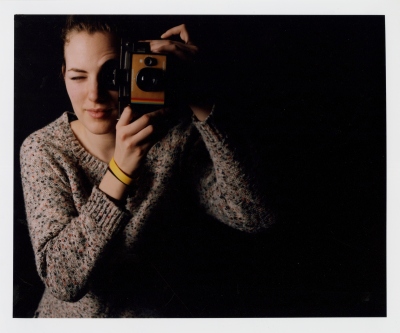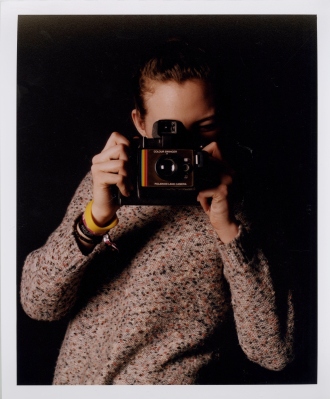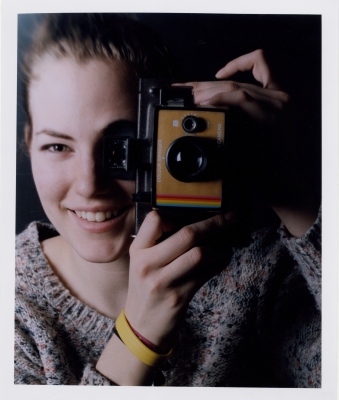To increase the possibility of more great portraits 3 rolls of film was used in an experiment shoot with a single photographer, looking at focusing closer within the frame while also trying 2 double exposures (even if the first was by accident – note: always check the multiple exposure is in the correct position before beginning). Using one flash and a black background has caused the background to become washed out in the first contact sheet although one successful print has been made by cropping into one of the images.
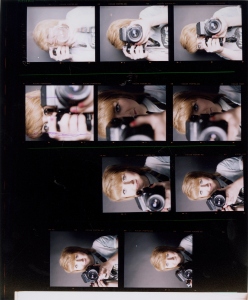
Own Photographs
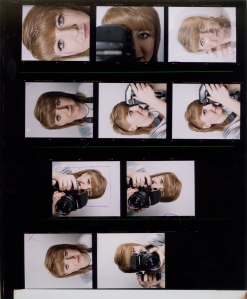
Own Photographs
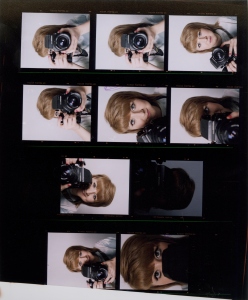
Own Photographs
Although not all of them are perfect, some more successful in composition than others, the ideas used within the shoot have developed to confirm the use of the lighting while also showing that even when a photograph looks great with an interesting composition of cropping, the concept is not very strong in conveying who the photographer is but the opposite, showing the idea of hiding behind the camera rather than being shown in display for the camera. A range of compositions of close up portraits with the camera in different positions as to change the focus of the image. In some of the portraits, the camera becomes the main compositional element destroying any possibility of creating a connection to the photographer in the portrait. Figuring the single flash light with the composition became a challenge when paying more attention to what is being seen the lens than in reality as the lens image is flipped and therefore you think the lighting is on the right side of you and the sitter however you look up and realise you’ve created a shadow on the face from the camera being on the side of the light. casting a shadow on the other eye which is undisturbed by the camera.
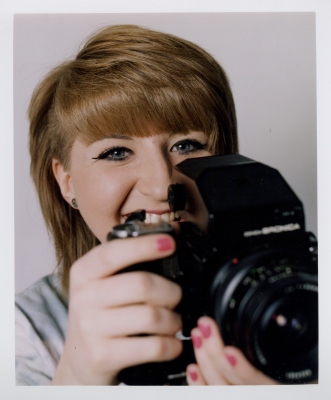
Own Photograph
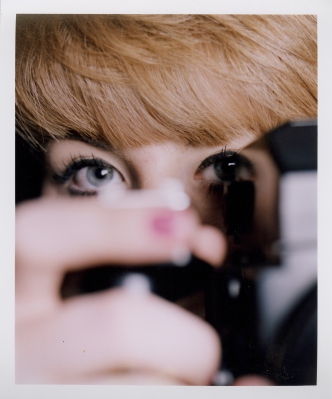
Own Photograph
Hidden Photographer would have been much more successful as a print if the left eye had been in complete focus as there is a softness to the eye. If the eye was in complete and only the focus, then this photograph would convey a sense of looking into the eye of the photographer. The eye is a vital instrument in photography and a photographer would be severely disadvantaged if they did not have this tool.
